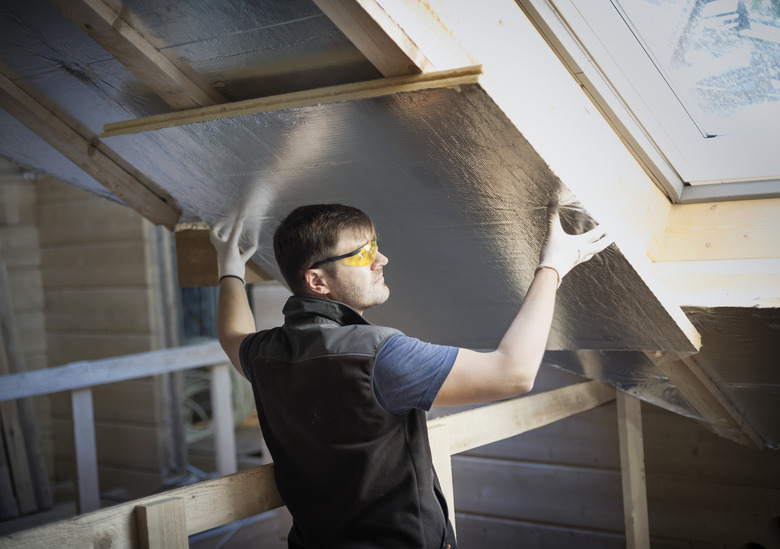Materials That Reduce Heat Transfer
We may receive a commission on purchases made from links.
Many materials reduce the transfer of heat, which comes in handy when you're trying to make your HVAC system more efficient. These materials sometimes differ depending on whether you want to keep heat in or out.
Heat transfer causes items to become the same temperature. Heat always moves from a warmer place to a cooler place, so cold items heat up to room temperature while warm items cool down to room temperature. The transfer of heat occurs consistently to make everything the same temperature.
Tip
In your home, materials with shiny, reflective surfaces can deflect heat to keep your home cooler. Foams and insulations are also common materials used to reduce heat transfer in your home to make it more efficient.
Shiny, Reflective Surfaces
Shiny, Reflective Surfaces
While reflective surfaces feel extremely hot to the touch when exposed to radiation or sunlight, the metal is actually repelling the radiation rather than transferring it. The shiny surface acts as a barrier to whatever lies beneath the reflection. The metal bounces the radiation back to where it came from instead of letting it through and transferring the heat.
In hot places where people cool their homes, roofs are sometimes made of reflective metal, using the principle of reflection to help the cooling process. You can experiment with this theory by placing a shiny, closed tin can outside in the sun. When you retrieve it, the can will be hot to the touch but the inside will remain cool.
Radiant barriers are sometimes used in attics to cut down on heat gain in the summer, which can save energy on your heating and cooling bills. A radiant barrier consists of a shiny material being installed in the attic to reflect the heat that naturally transfers through the roof. In some homes, the shiny material is combined with insulation to create a reflective insulation system that doubles up on reducing heat transfer.
Foams and Insulation
Foams and Insulation
Foams and house insulation are made of many materials, from perlite to fiber to cellulose insulation that you blow into your home. Asbestos was a common form of insulation until scientists discovered the substance's carcinogenic value causing many deaths. Fibers include materials such as cotton from mill waste; perlite, a volcanic mineral often used in foundations; cellulose, which comes from recycled newspaper; and foams made from chlorofluorocarbons. These materials are used to make items such as coolers and coffee cups.
Insulation works well for homes and other buildings because it adds a layer between the inside and outside worlds. This layer helps keep a home cool in the summer and warm in the winter. Both sides of insulation work the same, as the product absorbs heat but does not conduct it, trapping it in the substance.
Often used spray foam insulation is the most common foam insulation used in homes. When you use spray foam insulation, you're able to block heat transfer well since it fills all of the gaps. As the spray foam is applied, it expands to fill in the area. You can get small cans of spray foam insulation to fill small areas and larger kits to cover more ground. However, spray foam is messy and sometimes difficult to apply, so hiring a professional is often best.
Clay, Water, Mud
Clay, Water, Mud
Clay absorbs heat but does not conduct it. It absorbs the sun's radiation, trapping it in the center rather than letting it pass through to the cool house. Builders also use clay to make walls in structures such as adobe huts.
Water, mud and dirt do not easily conduct heat. The substances absorb the heat but require so much energy to heat up that the far side of the substances rarely receives any of the radiation. This principle explains why the top of the water in a still pool is almost always warmer than the bottom and why the inside of a cave is always chilly.
